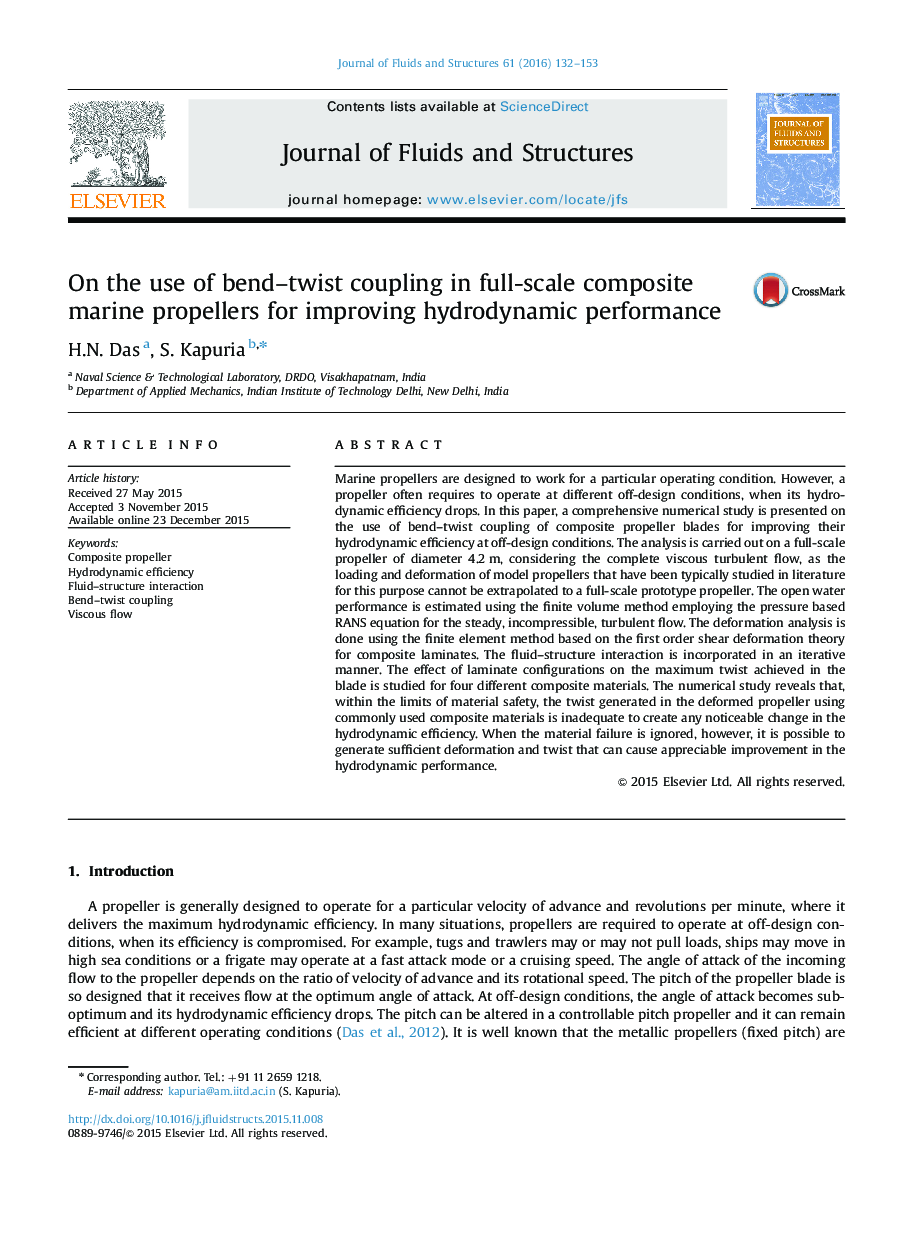| کد مقاله | کد نشریه | سال انتشار | مقاله انگلیسی | نسخه تمام متن |
|---|---|---|---|---|
| 792288 | 1466586 | 2016 | 22 صفحه PDF | دانلود رایگان |
• A comprehensive study on use of bend–twist coupling of composite propeller blades.
• Its effect on hydrodynamic performance is studied for full-scale propellers.
• Complete viscous turbulent flow condition considered.
• Twist generated due to coupling inadequate for appreciable improvement of efficiency.
• It is possible to generate sufficient twist only if material failure is ignored.
Marine propellers are designed to work for a particular operating condition. However, a propeller often requires to operate at different off-design conditions, when its hydrodynamic efficiency drops. In this paper, a comprehensive numerical study is presented on the use of bend–twist coupling of composite propeller blades for improving their hydrodynamic efficiency at off-design conditions. The analysis is carried out on a full-scale propeller of diameter 4.2 m, considering the complete viscous turbulent flow, as the loading and deformation of model propellers that have been typically studied in literature for this purpose cannot be extrapolated to a full-scale prototype propeller. The open water performance is estimated using the finite volume method employing the pressure based RANS equation for the steady, incompressible, turbulent flow. The deformation analysis is done using the finite element method based on the first order shear deformation theory for composite laminates. The fluid–structure interaction is incorporated in an iterative manner. The effect of laminate configurations on the maximum twist achieved in the blade is studied for four different composite materials. The numerical study reveals that, within the limits of material safety, the twist generated in the deformed propeller using commonly used composite materials is inadequate to create any noticeable change in the hydrodynamic efficiency. When the material failure is ignored, however, it is possible to generate sufficient deformation and twist that can cause appreciable improvement in the hydrodynamic performance.
Journal: Journal of Fluids and Structures - Volume 61, February 2016, Pages 132–153
